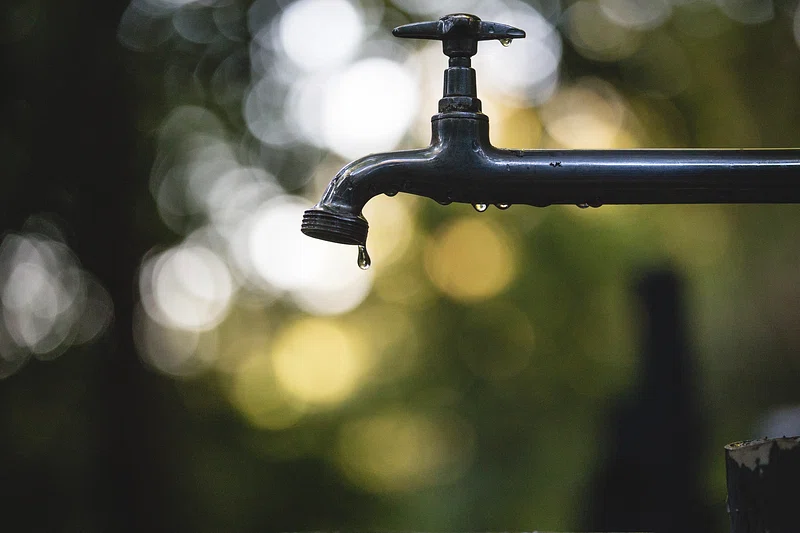Water shortage in Bengaluru hits borewells and wallets
Bengaluru, Karnataka’s capital and India’s tech hub, confronts a severe water crisis exacerbated by a prolonged drought, jeopardising the lives of its 13 million residents. The dwindling water levels in the Cauvery River have impacted the lives of people and agriculture, with skyrocketing tanker costs and unequal distribution.
The heart of the crisis lies in a prolonged drought that has left the Cauvery’s water levels dangerously low. The dearth of rainfall has not only impacted the city’s drinking water supply but has also dealt a significant blow to agricultural irrigation as Cauvery is one of the largest rivers in peninsular India and is a major source of water for Karnataka, Kerala and Tamil Nadu.
With the water supply from the river declining, the residents have turned to the numerous borewells that have dug in the city. But rising consumption of water from these wells has seen the ground water table fall sharply and so low has the water level fallen that the borewells themselves are now drying up, further exacerbating the scarcity.
Locals are feeling the pinch as water tankers, a lifeline for many, now require bookings in advance. Moreover, the cost of water tankers has surged from INR 500 to INR 3,000, adding financial strain to the already burdened populace.
The crisis reflects a broader issue of natural resource management and societal priorities. As the government directs attention to rural regions, inequality in suuply of water even through the tankers has also been another pain point for residents who accuse the water suppliers of prioritising higher paying customers.
“The water crisis has profoundly impacted our lives. We now depend on water tankers, and their prices have surged. Previously we used to get the same amount of water for INR 500 to 800, but now it costs INR 2,500 to 3,000. Unfortunately, water tanker services prioritise those willing to pay more. The government primarily focuses on rural areas, aiming to spare them from water expenses, assuming that urban dwellers can afford such expenditures,’’ Anish Singh, a manager with a technology firm in Bengaluru, tells Media India Group.
With the water crisis intensifying, a few, especially students, have shifted towards disposable items to minimise water usage for washing. “I live alone, and the water shortage has hit me hard. There is a specific window from 10:00 in the morning to 18:00 in the evening when the water supply halts. To cope, I have shifted to disposable plates and other items to minimise water usage, ensuring I navigate this challenging situation without significant disruptions,” Shagufta Hussain, a student tells Media India Group.
The city needs 3,100 million litres every day (MLD). Half of it comes from the Cauvery River, whose catchment area has received very less rainfall since August 2023, leading to most reservoirs having lowest water levels in the past 10 years.
The water crises has also impacted educational institutions and many coaching centres in Bengaluru have instructed students to attend classes online for a week, citing water ‘emergency’. Similarly, some schools have also temporarily closed, directing students to attend virtual classes.
Unplanned, illegal growth
The water crisis is a result of rapid and mostly unplanned and often illegal urbanisation, catering to the rapid rise in the city’s population as thousands of migrants have made Bengaluru their home, either in search of jobs or for access to its relatively better educational institutions, which draw students from all over India.
However, this rapid growth of the city has come at a huge cost to the environment. The construction of homes, offices as well as other urban infrastructure has often been carried out in places that served as catchment areas for the city’s numerous water bodies and sometimes by illegally reclaiming land from these water bodies themselves.
According to a report by the Indian Institute of Science (IISc), over the last four decades, the city has lost 79 pc of its water bodies and 88 pc of green cover, while areas covered by concrete have increased 11-fold.
A survey by the Indian Institute of Human Settlements pointed out that the per capita groundwater availability is rapidly declining, crashing from 14,180 litres a day in 1951 to 5,120 litres in 2001 and is expected to come down further to 3,670 by 2025. The green cover of the city has fallen from 68.2 pc of total area in 1973 to a mere 6.46 pc. Experts point out that in absence of green cover and with loss of waterbodies, the water availability in the city can only decline in future, without major remedial actions, which are yet to happen.
Moreover, the water consumption patterns are also skewed as about half the city’s population gets only 65 pc of its water needs, while 10 pc of users, in the high-income bracket, consume more than double the city’s average. On top of this about 25 pc of city’s water supply is wasted due to leakages and poor consumption habits.
In response to the severe crisis, the government has mounted emergency measures, including assuming control of all irrigation and commercial borewells. Additionally, it has also mandated the registration of every private water tanker in the city. In Bengaluru Urban district, 174 villages and 120 wards have been identified as vulnerable.
The government has banned use of piped water for cleaning vehicles, gardening, construction, and other recreational purposes.
Karnataka Chief Minister Siddaramaiah has announced that out of 136 taluks in the state, 123 taluks have been declared drought hit and 109 are severely affected.
With the monsoons still a few months away, the situation in the tech hub is bound to deteriorate further, before improving, if the rains come on time and in good quantity. Till then, the city’s residents, be it workers like Anish Singh or students like Shagufta Hussain have little choice than to grin and bear it.










